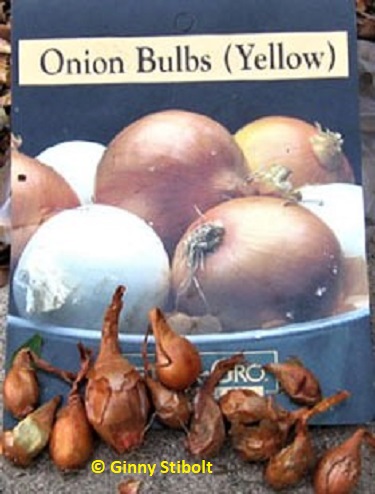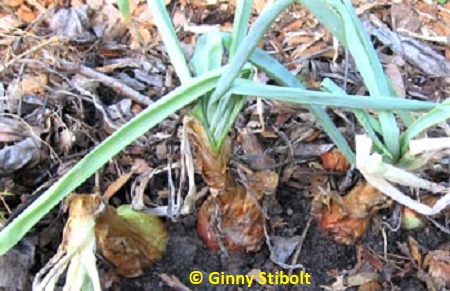Adventures of a Transplanted Gardener |
|||
The skinny on onions
| |||
|
Sad-looking rows of onions at the end of July. |
Long-day and short-day onions
The bulbing onions (Allium cepa) fit into three categories:
1) Short-day: These varieties are recommended for climates that are
hotter year round, like here in Florida. They will develop bulbs earlier
in the year with only 10-12 hours of daylight.
2)Intermediate-day (or day-neutral): These varieties that need 12 to 14 hours of daylight to start producing a bulb.
3) Long-day: These varieties require 14-16 hours of daylight to form onion bulbs. These are good for more northerly areas where the summer days are much longer and where the bulbs can't be left in the ground over the winter.
When it gets hot (like now), any of these varieties will stop growing--if I'd left mine in the ground, they'd start to grow again in the fall and produce a flower. I still have the label from my onions, so I was curious what kind I'd lucked into. There's no indication: The label says, "Onion Bulbs (Yellow)". The fine print on the back says they came from Arcadia, FL. So that was hopeful--I've learned that bulbs from Holland or Holland, MI may not do well here. Upon doing some more research I found that onion sets are produced only for short-day onions. So by dumb luck, I planted the right type of bulb and the positive results prove that out. This fall, I plan to be better organized about my onions and will plant onions sequentially once a month or so during the winter so that our harvest might be a little more spread out.
|
Three 2-inch onion bulbs and what's left of their leaves. |
Variety is the spice of life
Onions used to be part of the lily family, but most botanists now place them in their own family, Alliaceae. Onions are not known in the wild, only in cultivation. They were probably developed from a wild ancestor that grew in western Asia. Onion seeds have been found in Egyptian tombs and the onion may have been one of the first farmed vegetables.
Today there are hundreds of onion cultivars, differing in day-length requirement, skin color (white, brown, yellow, red, or purple), size, shape (globe-shaped, flattened, or spindle-shaped), pungency and sweetness. The chemical characteristics of the soil determine much of the pungency and sweetness of the crop. Some short-day cultivars are Excel, Yellow Bermuda, Granex, and Texas Grano, White Granex, and Tropicana Red.
Vidalia onions are sweet, non-pungent short-day onions, usually Granex or Texas Grano that are grown in four counties near the town of Vidalia, GA. Onion farmers there have purchased the exclusive right to use that name. Our onions grown in Florida can be just as sweet.
Bunching onions
Bunching onions (A. fistulosum) are non-bulbaceous perennials
that you can keep going with that mathematical oxymoron--multiply by
dividing. When you need some onions, dig up a bunch, but leave some
in the ground, so new bunches can form. Plant them two or three inches
deep if you want the stems to be white. Spring onions or green onions,
immature bulbing onions, are often used in place of the true bunching
onions. This how I used my two rows of green onions and I'll probably
do that again, but I'm going to try some true bunching onions next year,
too. I'll let you know how they do.
Now that the heat of summer is upon us, it is the time for planning
your cool weather crops. Can't you just imagine it--you'll be able to
work in your garden after 8am and not have sweat dripping from the end
of your nose. I can hardly wait.
Ginny Stibolt is a life-long gardener, a botanist, a naturalist, and a garden writer. You may contact her or read more of her articles posted on her website: www.greengardeningmatters.com.
Copyright Ginny Stibolt




